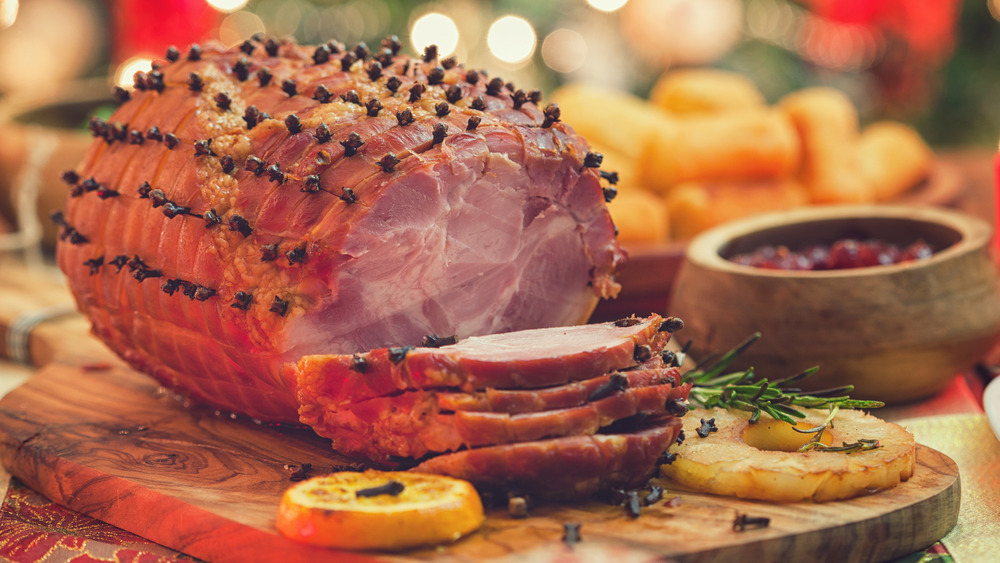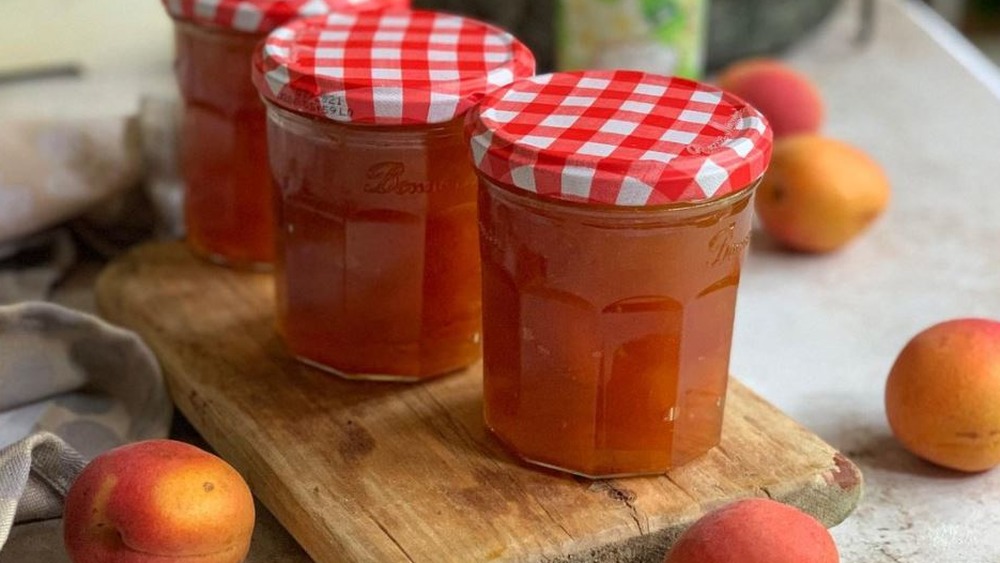The Secret Ingredient Your Ham Glaze Has Been Missing
'Tis the season to be jolly, and also to gorge yourself on all sorts of delicious foods that tend to fill your plate to the brim during the holidays. This is a time when dishes that you only make once or twice a year are expected to make an appearance, which is why many a home cook is busy trying to brush up on their recipes and remember the mistakes they made when cooking ham last year.
Fortunately, there are all sorts of simple secrets to cooking the perfect ham, so with some homework and a little elbow grease, you can virtually guarantee that this year's roast will be a fitting centerpiece on your dinner table. However, let's say that you want to aim a little higher than "mmm, this is good" this time around. Maybe you want to cook a ham that all future hams will be compared to. For that sort of greatness, you'll need to make sure that your glaze is on point, and luckily, there just so happens to be a neat secret that should elevate it to the next level. Let's take a look at the secret ingredient your ham glaze has been missing.
Apricot preserves are a handy trick for making the perfect ham glaze
According to Carl's Bad Cravings, a lovely glazed ham relies on finding a perfect combination of saltiness, sweetness, and acidity. The salt, of course, comes from the ham itself. It is the duty of the glaze to take care of the rest of the flavor profile. There are lots of ways to achieve the sweetness — whether that's using different sugars, honey, or maple syrup. Meanwhile, the acidity might come from fruit juices, vinegar, or good old mustard.
However, if you really want to bring your ham glaze game to the next level, the site provides a recipe that recommends choosing honey as your sweet ingredient, and complementing it with a very specific, slightly surprising ingredient — apricot preserves. The preserves work very well with honey's taste but don't steamroll over it, which results in a delicious, "multi-dimensional" sweetness that works extremely well with ham. What's more, you can also use the honey-and-apricot-preserves trick for chicken, meatball, and even vegetarian dishes that require a glaze.

